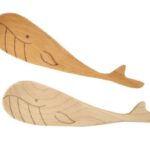Whether you’re a seasoned vocalist or just starting to explore the world of singing, solfege—the music education method that uses “do-re-mi” syllables—is a powerful tool for developing pitch accuracy, sight-singing skills, and confidence. Solfege is often associated with choir training or classical music education, but its benefits extend far beyond, making it an essential skill for singers of all styles. For beginners and experienced singers alike, solfege offers a foundational approach to understanding music at a deeper level. In this article, we’ll introduce some of the most effective solfege books that can transform your voice and help you sing with more confidence. These books guide you through exercises that strengthen your musical ear, improve vocal control, and boost your ability to read music. Let’s dive into the world of solfege and find the perfect Solfege Books to enhance your vocal journey.
Why Solfege Matters for Vocalists
Solfege is a time-tested method that enables singers to internalize musical notes through syllables. Each note in a scale is assigned a unique syllable (such as do, re, mi, etc.), creating a mental framework that helps vocalists recognize pitch relationships and navigate melodies with ease. But why does this matter?
- Pitch Accuracy: Solfege teaches you to hear notes internally before you sing them, which improves pitch accuracy.
- Sight-Singing Skills: Solfege helps you read music more effectively by associating notes with syllables, making sight-singing smoother and less intimidating.
- Musical Memory: With solfege, singers develop a stronger memory for melodies, harmonies, and intervals.
- Confidence Building: By mastering pitch and rhythm through solfege, vocalists gain confidence, which shines through in their performances.
Choosing the Right Solfege Book
The world of solfege books is vast, with options for beginners, intermediate, and advanced vocalists. The best books include structured exercises, examples, and practice songs that strengthen your skills incrementally. Consider your current level, goals, and the style of music you enjoy as you choose a book that fits your needs.
1. “Modus Novus” by Lars Edlund
One of the most respected books on solfege, Modus Novus by Lars Edlund, introduces readers to atonal solfege. Unlike traditional solfege, which centers around major and minor keys, atonal solfege focuses on chromaticism and complex interval patterns.
- Ideal For: Advanced singers who want to master challenging intervals and sight-singing without relying on key centers.
- Why It’s Great: Modus Novus expands your musical ear, making it easier to tackle complex contemporary pieces with unusual tonalities.
- Key Feature: Exercises that progressively introduce singers to atonal sight-reading, transforming their confidence in reading and performing challenging pieces.
2. “The Kodály Method I: Comprehensive Music Education” by Lois Choksy
Based on the principles of Hungarian music educator Zoltán Kodály, this book emphasizes the importance of solfege in early music education. The Kodály Method is popular worldwide for its emphasis on teaching musical skills to children, but adults can also benefit from the book’s foundational exercises.
- Ideal For: Beginners who want to build a strong musical foundation.
- Why It’s Great: The Kodály Method introduces musical concepts through familiar folk songs, making learning both engaging and enjoyable.
- Key Feature: Songs and exercises tailored to enhance vocalists’ understanding of scale relationships, rhythm, and phrasing, all using solfege syllables.
3. “Sight Singing Complete” by Bruce Benward
For those looking for an all-in-one guide, Sight Singing Complete offers a thorough introduction to solfege, sight-singing, and musical notation. This book spans a wide range of genres, from classical to jazz, making it suitable for singers who want to explore diverse styles.
- Ideal For: Singers of all levels who want a comprehensive approach to sight-singing and solfege.
- Why It’s Great: Its progressive structure, starting from the basics of pitch and rhythm, provides a well-rounded solfege education.
- Key Feature: Exercises that combine rhythmic and melodic elements, helping vocalists develop both pitch accuracy and timing.
4. “Solfege, Ear Training, Rhythm, Dictation, and Music Theory” by Marta Arkossy Ghezzo
This comprehensive workbook is perfect for those who want to strengthen their ear training and solfege skills alongside rhythm and music theory. Marta Arkossy Ghezzo’s book includes practical exercises that reinforce essential skills for singers.
- Ideal For: Intermediate singers aiming to build a balanced skill set in ear training, rhythm, and theory.
- Why It’s Great: This book takes a holistic approach, covering multiple aspects of musicianship beyond solfege alone.
- Key Feature: Exercises that integrate solfege with dictation and rhythm, training the complete musician and vocalist.
5. “One-Minute Sight Singing” by Leonhard Deutsch
If you’re short on practice time but want to improve your sight-singing abilities, One-Minute Sight Singing offers a quick, daily approach. Each exercise can be completed in about a minute, making it ideal for consistent, manageable practice.
- Ideal For: Busy singers who want to incorporate quick sight-singing practice into their daily routine.
- Why It’s Great: The book’s brevity makes it easy to stay consistent with practice, even on hectic schedules.
- Key Feature: Short, targeted exercises that improve pitch recognition and sight-singing without requiring a major time commitment.
6. “Practical Sight Singing” by Robert Ottman
Robert Ottman’s Practical Sight Singing is a well-loved choice for college music programs and vocal instructors. Known for its detailed exercises and thorough approach, this book helps singers tackle increasingly difficult musical passages with confidence.
- Ideal For: Advanced singers or music students who want a rigorous approach to sight-singing.
- Why It’s Great: The progression from simple to complex exercises makes it perfect for vocalists who want to continually challenge their skills.
- Key Feature: Practical exercises with a strong emphasis on intervals and rhythmic complexity, enabling singers to handle demanding musical pieces.
Tips for Using Solfege Books Effectively
Now that you know some top-rated solfege books, here are a few tips to maximize their benefits:
1. Practice Consistently
Consistency is key when it comes to solfege. Set aside dedicated practice time each day, even if it’s only 15 minutes. Regular practice will help reinforce pitch recognition, rhythm, and sight-singing ability.
2. Start Slowly
When learning new exercises, it’s okay to start at a slower tempo to ensure accuracy. Rushing can lead to mistakes, while slow, deliberate practice will build a solid foundation.
3. Use a Keyboard or Tuner
For beginners, a keyboard or tuner can be helpful in confirming pitch accuracy as you practice. Use these tools to match your pitch to the correct solfege syllable, reinforcing ear training.
4. Record Yourself
Recording your practice sessions can provide valuable feedback. By listening back, you can identify areas for improvement and track your progress over time.
5. Combine Singing with Clapping
Many solfege books incorporate rhythm exercises, and clapping can help you internalize timing while singing. This is especially useful in books like Sight Singing Complete and The Kodály Method I that emphasize rhythm training.
How Solfege Books Transform Your Voice
The power of solfege books lies in their ability to help singers recognize pitch, understand musical structure, and interpret music with confidence. By mastering solfege, vocalists can strengthen both their pitch accuracy and sight-reading abilities, which are crucial for ensemble singing, solo performances, and auditions.
- Enhanced Pitch Recognition: With solfege training, singers learn to identify pitches and intervals, improving their vocal precision.
- Better Musical Interpretation: Solfege encourages a deeper understanding of musical phrasing, rhythm, and dynamics.
- Increased Confidence in Performances: Armed with a strong solfege foundation, vocalists feel more confident and perform with greater ease.
Choosing the Right Book for Your Needs
Every singer’s journey with solfege is unique, and the right book will depend on your experience level, time commitment, and musical goals. Take time to evaluate the features of each book, considering how its content and exercises align with your current skills and aspirations.
Whether you’re aiming to improve your sight-singing, develop a sharper ear, or build overall confidence, there’s a solfege book that can help you reach those goals. The journey to mastering solfege can be challenging but deeply rewarding, as it opens up new possibilities in your vocal abilities.
Conclusion: Sing with Confidence Using Solfege
With the right solfege book, you can unlock a new level of musical understanding and vocal control. From Modus Novus for advanced atonal studies to One-Minute Sight Singing for quick daily practice, there’s a solfege guide for every vocalist. Remember that progress takes time, and consistency is key. Embrace the journey, enjoy the process, and soon, you’ll find yourself singing with greater accuracy, confidence, and joy.
Read More Interesting Articles On Our Site!







